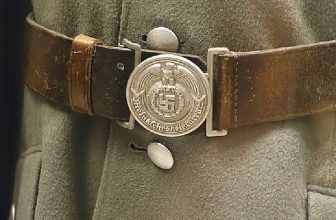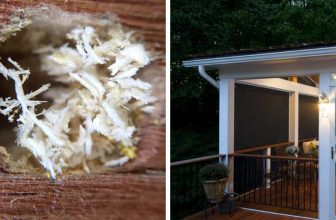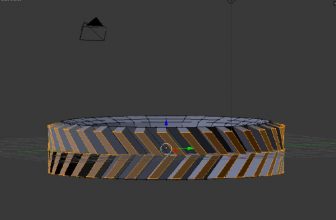How to Build a Clothesline Out of Pipe
Summer is in full swing, which means one thing: hot, sticky days. Don’t let the heat get you down, though! Instead, beat the heat by staying cool with a DIY clothesline. Building a clothesline out of the pipe is easy and can be done in just a few hours. Plus, it’s a great way to save money on your electric bill. Read on for instructions on how to build a clothesline out of pipe.
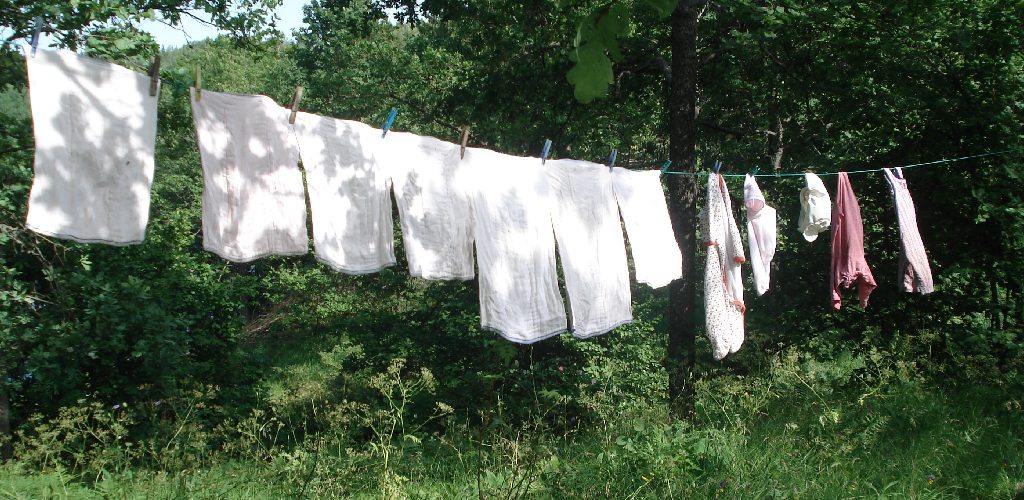
A clothesline is one of the oldest pieces of laundry equipment. It is simple, efficient, and easy to store. But it can be tiring on your back and arms if you have to bend over to Hang your clothes constantly. So many people choose to build a clothesline out of the pipe. PVC pipe is an ideal material for a clothesline because it is lightweight and easy to work with. Plus, it won’t rust or rot like metal pipes.y
Why Choose PVC Pipe?
PVC pipe is a popular choice for DIY projects because it is affordable, durable, and versatile. It’s also lightweight and easy to work with, making it perfect for building a clothesline.
Additionally, PVC pipe is resistant to corrosion, meaning it won’t rust or rot over time. This makes it a great material for outdoor use as it can withstand harsh weather conditions.
Plus, PVC pipe is available in a variety of sizes and lengths, making it easy to customize your clothesline to fit your space and needs.
What You’ll Need:
1/2 Inch Pvc Pipe (10 Feet in Length):
You will need a 1/2 inch PVC pipe, preferably one that is 10 feet in length. This size works well for a standard-sized clothesline. You can find PVC pipes at most home improvement stores or hardware stores.
Pipe Cutters:
To cut the PVC pipe to the desired length, you will need pipe cutters. These are specially designed tools that make clean and precise cuts in PVC pipe.
Measuring Tape:
A measuring tape will come in handy when determining the length of your clothesline. It’s important to measure accurately to ensure your clothesline is strong and secure.
Concrete:
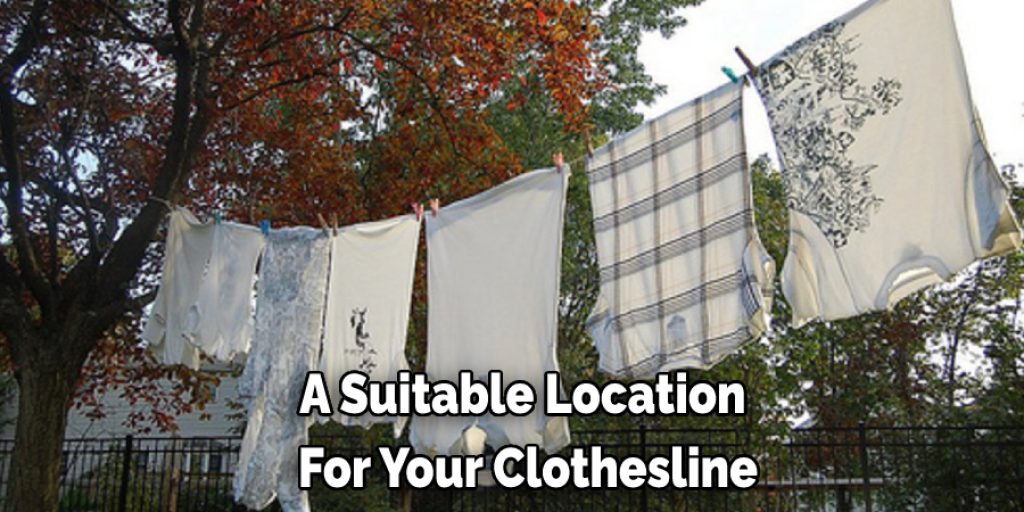
To anchor your clothesline, you will need a concrete mix. You can purchase pre-mixed concrete or mix it yourself using cement, sand, and gravel.
Post Hole Digger:
You will need a post-hole digger to create holes for your clothesline posts. This tool is specifically designed to make deep, narrow holes in the ground.
Clothesline Rope:
The final item you’ll need is a strong and durable clothesline rope. You can find this at most hardware stores or online.
A Step-by-Step Guide on How to Build a Clothesline Out of Pipe
Step 1: Choose the Location for Your Clothesline
The first step is to find a suitable location for your clothesline. It’s essential to choose a spot that gets plenty of sunlight so that your clothes will dry quickly. You’ll also want to make sure the area is level so that your clothesline isn’t lopsided. Once you’ve found the perfect location, mark the spot with a piece of chalk or a marker.
The location you choose should also have enough space for the clothesline to be fully extended without any obstructions. Keep in mind that the standard height for a clothesline is around 6 feet, so make sure there are no trees or other structures that could get in the way.
Step 2: Determine How Long You Want Your Clothesline
The next step is determining how long you want your clothesline to be. This will depend on how much laundry you typically have and the size of your yard. A clothesline that’s 30 feet long should suffice for a small yard. However, if you have a larger yard or do a lot of laundry, you may want to opt for a longer clothesline (up to 50 feet).
The average height of a clothesline is around 6 feet. However, it’s up to you to decide how high or low you want your line to be. Keep in mind that a higher line may require more strength and effort to hang your clothes.
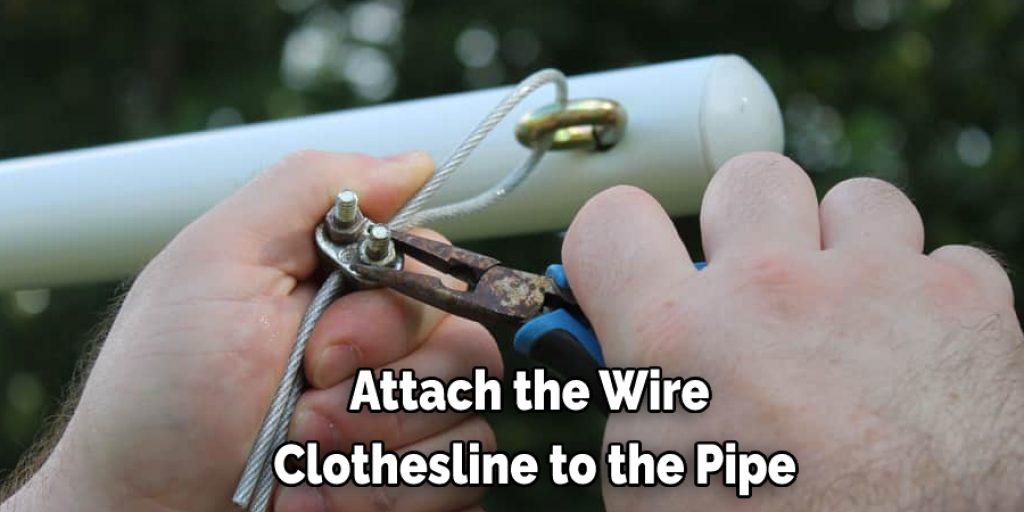
Step 3: Cut the Pipe to the Desired Length
Once you know how long you want your clothesline, it’s time to cut the PVC pipe to size.
PVC pipe is a plastic plumbing pipe primarily used to transport cold and hot water. It can also be used for venting sewer gases and as structural tubing. PVC pipe is generally white or cream, but it can also come in clear or gray varieties.
If you’re using a PVC cutter, place the cutter around the pipe and tighten the jaws until they’re flush against the pipe. Then, rotate the cutter around the pipe until it makes a complete cut.
Using a power saw, set the blade to make a 45-degree cut and slowly guide the blade through the pipe. You may need to make several passes with the saw before it cuts through.
Once you’ve cut your PVC pipe to size, use sandpaper to smooth down any rough edges.
Step 4: Drill Holes at Each End of the Pipe
Next, you’ll need to drill a hole at each end of the pipe. These holes will be used to thread the wire clothesline through.
Use a power drill to make two holes at each end of the pipe. The size of the holes should be slightly wider than the thickness of the clothesline. For example, if you’re using a 3/16-inch thick clothesline, you should drill 3/8-inch holes.
However, make sure the holes are not too wide, as this can weaken the pipe’s structural integrity. Aim for a snug fit between the holes and clothesline.
Step 5: Assemble the Clothesline Frame
Now, it’s time to start assembling your clothesline frame. Begin by attaching two elbow joints to each end of the pipe. Make sure the connections are tight so that the structure is sturdy.
Then, attach a T-joint to the middle of the pipe. This will be used to support the clothesline pulleys.
Finally, attach the remaining two elbow joints to the end of the pipe. These will be used to secure the wire clothesline.
Step 6: Attach the Wire Clothesline to the Pipe
Now that you have your clothesline wire and pipe, it’s time to attach them. This can be done in several ways, but we recommend using zip ties or screws and washers. First, measure how much clothesline wire you will need to reach from one end of the pipe to the other. Cut the wire to size, then use zip ties or screws and washers to attach it to the pipe. Ensure that the connection is secure so that your clothesline doesn’t come loose while in use.
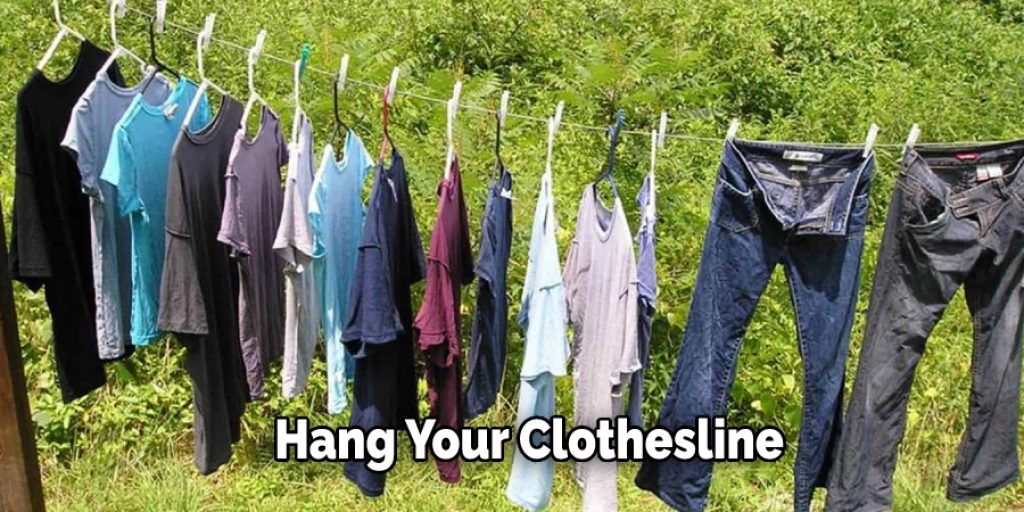
The wire should be taut but not too tight. If it’s too tight, it may snap under the weight of your clothes. You can adjust the tension by loosening or tightening the zip ties or screws.
Step 7: Install the Clothesline Pulleys
The next step is installing the clothesline pulleys. These will be used to raise and lower your clothesline as needed.
First, determine where you want to position the pulleys on the pipe. We recommend setting them about 3 feet apart. Once you know where to place the pulleys, use a drill to make two holes at each mark. The holes should be big enough for the bolts with your pulleys to fit through.
After drilling the holes, thread the bolts through the holes and tighten them in place. Be sure not to overtighten the bolts, as this could damage the threads.
Step 8: Hang Your Clothesline
Now that your clothesline frame and pulleys are installed, it’s time to hang your clothesline. First, find two strong trees or posts that are far enough apart to accommodate the length of your clothesline. If you’re using posts, you may need to sink them into the ground so they’re sturdy.
Once you have your support structures in place, tie one end of the clothesline wire to one of the structures. Then, thread the other end of the wire through the pulleys and tie it off to the second support structure.
Now, all you have to do is adjust the tension on the wire until it’s tight enough to support your laundry. And that’s it! You now know how to build a clothesline out of pipe.
Once you’ve built your clothesline, you can start using it immediately. Just check the wire periodically to make sure it’s still in good condition. And if you ever need to take your clothesline down, simply untie the wires and disassemble the frame.
Building a clothesline is a great way to save money on your energy bills. And it’s also a great way to enjoy some fresh air while doing your laundry. So why not give it a try? You may be surprised at how much you enjoy using your new clothesline.
Tips and Tricks:
If you’re using PVC pipe, you’ll need to sand down the edges of the pipe so that they’re not sharp. You can use a piece of sandpaper or a power sander for this.
Be sure to measure the width of your clothesline before you start building it. This will ensure that the clothesline is the right size for your needs.
It’s good to put a cap on each end of the clothesline pipe so that clothes won’t slide off. You can buy caps at most hardware stores.
If you want to be able to adjust the height of your clothesline, you can use pipes with adjustable legs. These are available at most hardware stores as well.
When you’re finished building the clothesline, please test it out before hanging any laundry. This will ensure that it’s sturdy and safe to use.
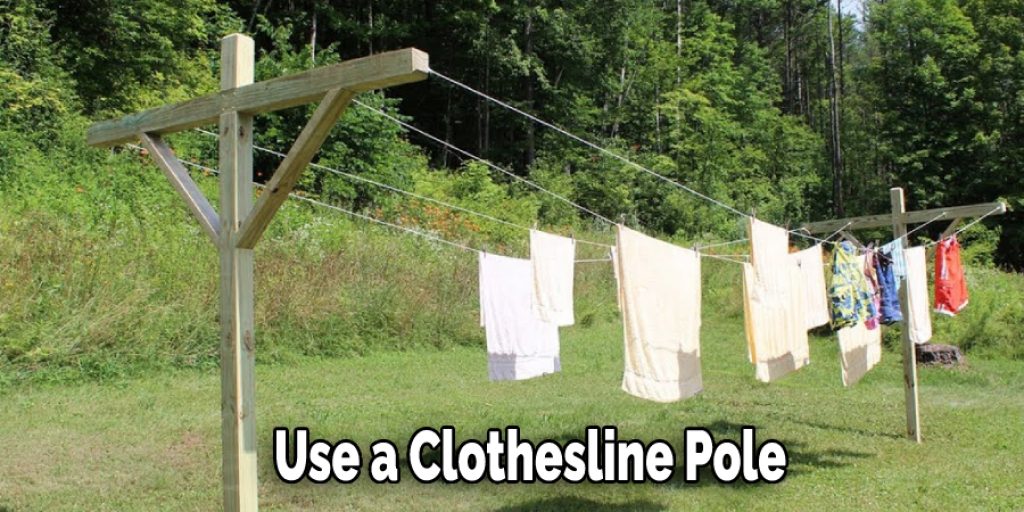
Pros and Cons
Pros of Building a Clothesline Out of Pipe
– It is very sturdy and can hold a lot of weight.
– It is easy to build and doesn’t require many materials.
– It is portable and can be easily moved if necessary.
Cons of Building a Clothesline Out of Pipe
– It can be challenging to find a pipe of a suitable size.
– It can be challenging to attach the clothesline to the pipe.
– The clothesline may not be able to rotate if it is not attached correctly.
If you are looking for a sturdy clothesline that is easy to build, you may want to consider building a clothesline out of the pipe. However, there are a few things to keep in mind before you begin. First, make sure you have all the necessary materials and tools and take the time to measure and cut the pipe properly. With a bit of effort, you can build a clothesline that will last for years.
How Deep Should a Clothesline Pole Be?
Most people don’t consider how deep their clothesline pole should be. After all, as long as the line is sturdy and the clothes can reach from one end to the other, what does it matter?
However, there are a few things to consider when deciding how deep to set your clothesline pole. First, you need to make sure that the pole is firmly anchored in the ground. This will help to prevent it from toppling over in strong winds. Secondly, you need to consider the height of your clothesline. The deeper the pole is set in the ground, the higher the line.
This is important if you want to be able to hang longer items, such as sheets and towels. Finally, you need to consider the type of soil you have. If you have loose, sandy soil, you will need to set the pole deeper so that it doesn’t shift or sink over time. With a little bit of planning, you can ensure that your clothesline pole is functional and safe.
Frequently Asked Questions:
Q: Can I Use Metal Pipes Instead of PVC Pipes?
A: Yes, you can use metal pipes as an alternative to PVC pipes. Just make sure that the metal pipes are sturdy and can support the weight of your clothesline. It’s also important to note that metal pipes may be more difficult to cut and drill holes into. The choice between using PVC or metal pipes will ultimately depend on your personal preference.
Q: Can I Build a Clothesline on My Apartment Balcony?
A: It depends on the size of your balcony and its weight-bearing capacity. If you have enough space and can safely secure the clothesline, then yes, you can build a clothesline on your apartment balcony. However, be sure to check with your building manager or landlord before doing so. You may also need to use a smaller and lighter clothesline frame made specifically for balconies.
Q: How Do I Maintain My Clothesline?
A: To maintain your clothesline, regularly check the wire for any signs of wear and tear. You may also need to tighten the wire occasionally if it becomes loose over time. Additionally, make sure to clean the lines after each use to prevent dirt and grime buildup. It’s also a good idea to store the clothesline in a covered area when not in use to protect it from the elements. And that’s all there is to building and maintaining a clothesline out of pipe!
Q: Can I Build a Clothesline in Any Weather?
A: It’s best to build a clothesline on a sunny day when the ground is dry. This will make it easier to dig and secure your support structures into the ground. Building a clothesline in wet or muddy conditions may result in an unstable structure. If you are determined to build a clothesline in less-than-ideal weather, be sure to wear appropriate protective gear and take extra precautions to ensure safety.
Overall, building a clothesline is a simple and eco-friendly way to save money on your energy bills while enjoying the fresh air and sunshine. With these tips and tricks, you can easily build a sturdy clothesline out of pipe in no time. So go ahead and give it a try. You may find it has become your new favorite way to do laundry! Happy building!
Conclusion:
So, there you have it: how to build a clothesline out of pipe! With a few simple tools and supplies, you can build your clothesline in no time. Now that you know how to do it, get started on yours today and enjoy the convenience of drying your clothes outdoors. Not only will it save you money on your energy bills, but it’s also a great way to enjoy the fresh air and sunshine while doing your laundry. Have fun building! So why not give it a try? You may be surprised at how much you enjoy using your new clothesline.
You Can Check It Out to Run a Pipe Under a Sidewalk

